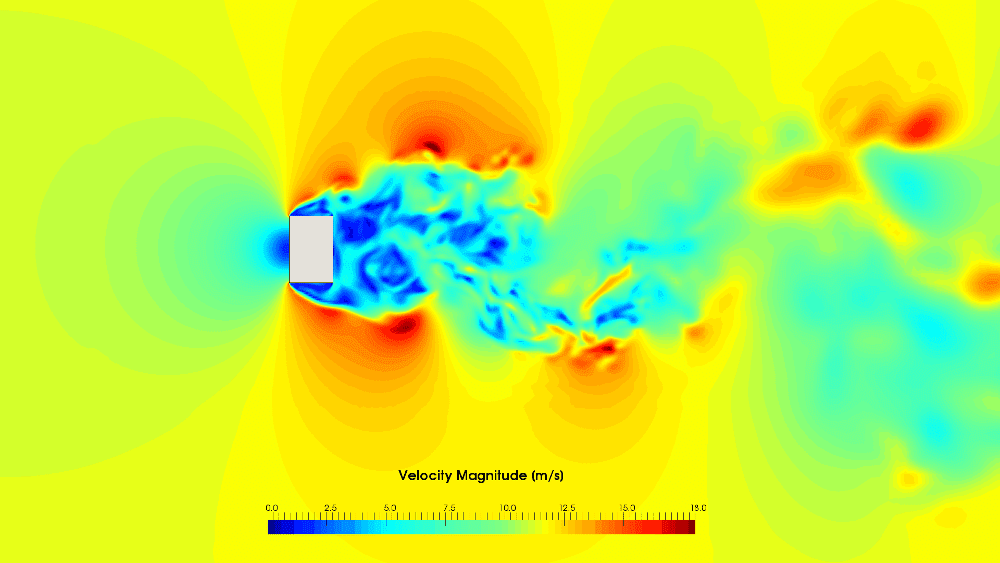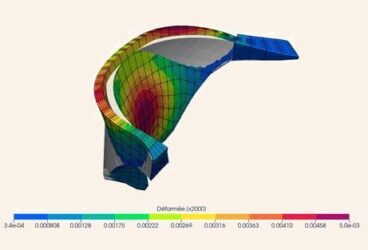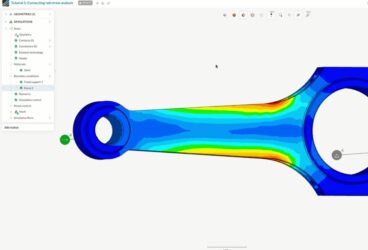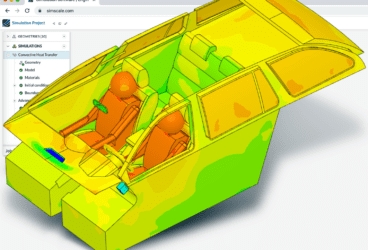Transient simulations have historically required a high investment in time and hardware in order to provide accurate results. Here at SimScale, we are proud to announce a release that tackles this problem via cloud computing, so that engineers no longer need to choose between speed and accuracy.
The solution is a brand-new GPU-based solver using the lattice Boltzmann method (LBM), which pairs high accuracy with unparalleled speed and is accessible via the cloud with SimScale.
We partnered with Numeric Systems GmbH to develop this innovative feature through their tool Pacefish®, making it possible for SimScale to reduce running times for transient simulations from weeks and days to hours and minutes.
Developed by Numeric Systems GmbH, Pacefish® is a revolutionary implementation of the lattice Boltzmann method (LBM) tailored to the massively-parallel architecture of GPUs. Its ability to run on multiple GPUs in parallel enables turnaround times that are 20-30 times shorter than with traditional methods. Moreover, Pacefish® supports several turbulence models such as Smagorinsky, SST-DDES, Hybrid SST-IDDES and k-omega SST making it unique among other LBM solvers.
Wind analysis (results showing velocity) in Gangnam District (South Korea) created end-to-end via a web browser with SimScale and simulated according to the Korean Building Code 2016. Unsteady analysis using a k-omega SST turbulence model and a grid of more than 300 million cells (200s real-time simulated in less than 2h on 8 GPUs).
In its first release, this new solver enables virtual wind tunnel analysis for a variety of applications, including wind loads on buildings, pedestrian wind safety analysis, automotive aerodynamics, and other external flow applications.
Lattice Boltzmann Method Validation of the Solver Using the Lattice Boltzmann Method (LBM)
As the accuracy of simulation results is critical, several validation projects have been carried out, comparing the generated simulation results with wind tunnel measurement data. The most important results from these validations will be presented during this free webinar. All you have to do is register.
As an example, this project was created with the purpose of validating the wind pressure on a tall building using the following parameters:
- Static pressure coefficient distribution on the windward, lateral and leeward side of the building
- Static pressure coefficient distribution over the building perimeter at ⅔ of the building height
These parameters were obtained by performing a temporal averaged mean of the values, calculated with a transient incompressible flow analysis.

For validation and comparison purposes, measurements of mean static pressure normalized by the dynamic pressure, with a velocity of 12.7m/s (at the building height), were compared with the data obtained from the numerical and experimental results.
The mean static pressure coefficients, Cp, on the upper windward, sidewall and leeward faces were extracted for the isolated building case at 2/3 of the height of the building. In the end, there was a good agreement between the results of our simulation study with the numerical and experimental results, which can be observed in detail here.
Lattice Boltzmann Method How to Get Access to the New LBM Solver
As with every solver on SimScale, every user can benefit from this innovative technology without specific hardware requirements related to graphics cards, data storage or CPU performance. Relying on cloud computing, users can run industrial-scale external flow analysis with hundreds of millions of cells within just a few hours of computing time on up to 16 GPUs.
Simulation of wind loads on high-rise buildings: LOHAS park in Hong Kong
“The accurate analysis of transient flows has historically been fraught with very long computing times and high up-front costs in order to yield realistic results. With the release of this new Lattice-Boltzmann solver, CFD engineers no longer need to choose between speed and accuracy—and on top of that, can access it with the convenience of an entirely web-based workflow. We’re very excited to see our customers seize the new opportunities this technology is opening up,” said David Heiny, CEO and co-founder of SimScale.
“After years of intense research and development on our GPU-accelerated CFD-solver Pacefish® from scratch, we are proud and happy to offer our unique piece of numerical technology to public usage in cooperation with our cloud simulation partner SimScale. Because of our great partnership, we believe in the disruptive potential of this integration and are looking forward to a very exciting future,” said Eugen Riegel, CEO of Numeric Systems GmbH.
Companies and engineers interested in learning more about SimScale’s new GPU-based solver using the Lattice Boltzmann method can see real-time simulation here, as well as contact our sales team directly here.


